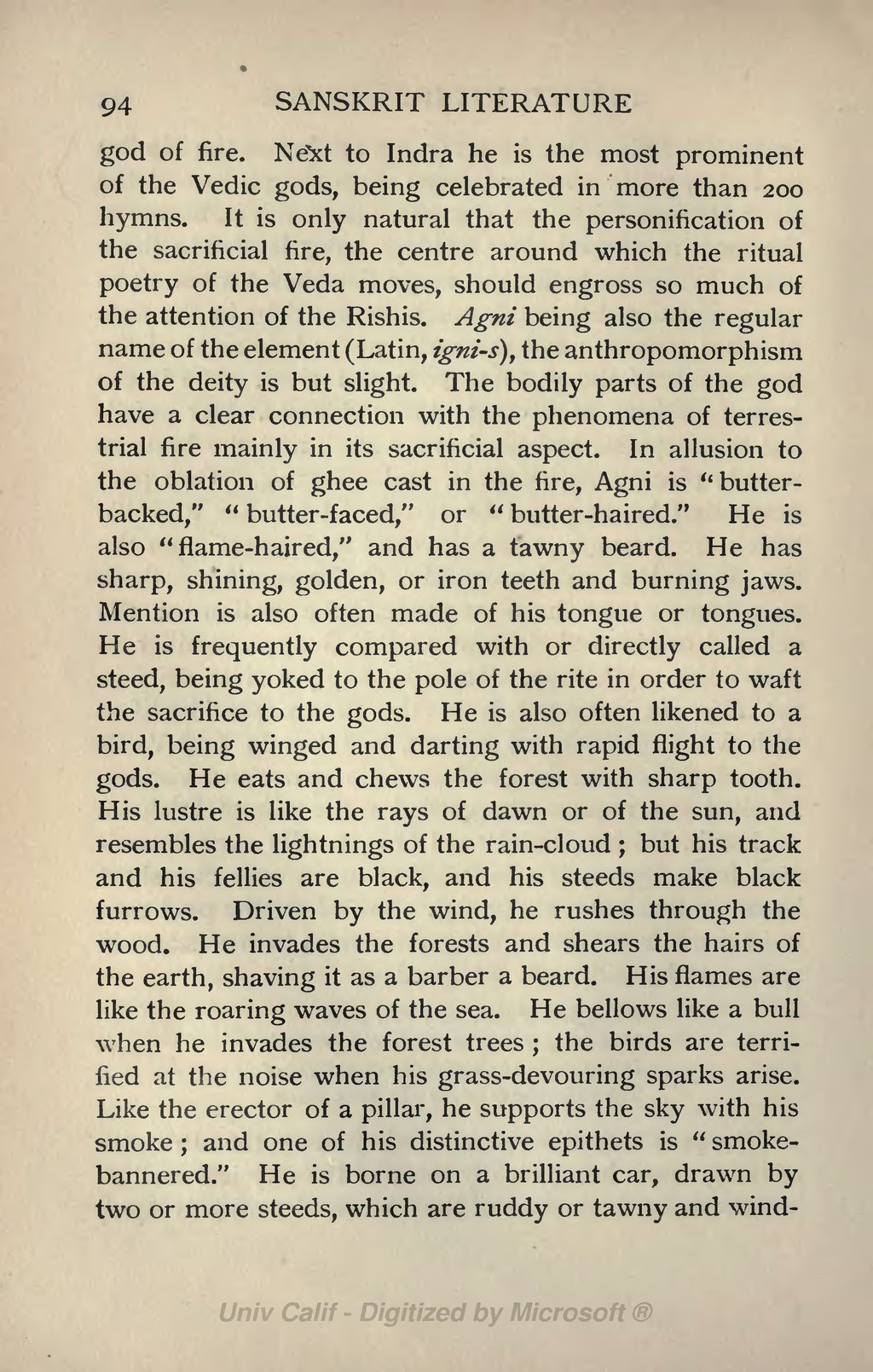god of fire. Next to Indra he is the most prominent of the Vedic gods, being celebrated in more than 200 hymns. It is only natural that the personification of the sacrificial fire, the centre around which the ritual poetry of the Veda moves, should engross so much of the attention of the Rishis. Agni being also the regular name of the element (Latin, igni-s), the anthropomorphism of the deity is but slight. The bodily parts of the god have a clear connection with the phenomena of terrestrial fire mainly in its sacrificial aspect. In allusion to the oblation of ghee cast in the fire, Agni is "butter-backed," "butter-faced," or "butter-haired." He is also "flame-haired," and has a tawny beard. He has sharp, shining, golden, or iron teeth and burning jaws. Mention is also often made of his tongue or tongues. He is frequently compared with or directly called a steed, being yoked to the pole of the rite in order to waft the sacrifice to the gods. He is also often likened to a bird, being winged and darting with rapid flight to the gods. He eats and chews the forest with sharp tooth. His lustre is like the rays of dawn or of the sun, and resembles the lightnings of the rain-cloud; but his track and his fellies are black, and his steeds make black furrows. Driven by the wind, he rushes through the wood. He invades the forests and shears the hairs of the earth, shaving it as a barber a beard. His flames are like the roaring waves of the sea. He bellows like a bull when he invades the forest trees; the birds are terrified at the noise when his grass-devouring sparks arise. Like the erector of a pillar, he supports the sky with his smoke; and one of his distinctive epithets is "smoke-bannered." He is borne on a brilliant car, drawn by two or more steeds, which are ruddy or tawny and wind-
